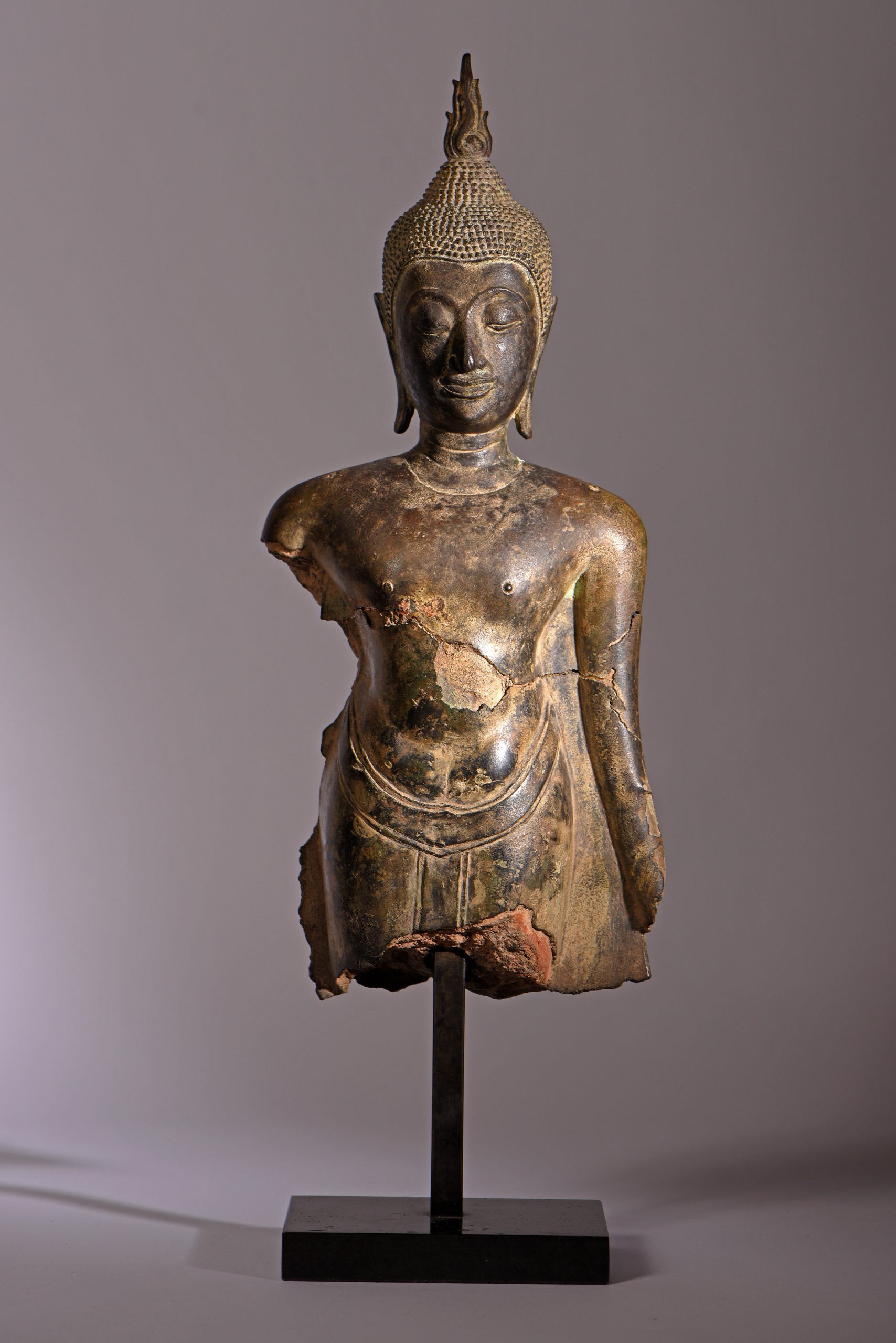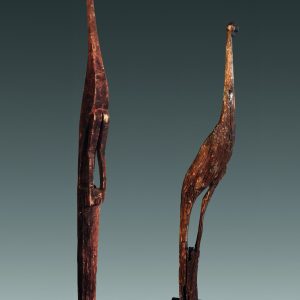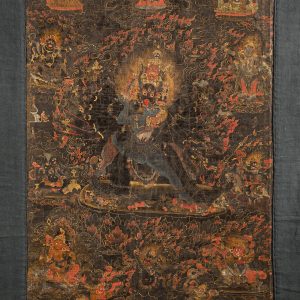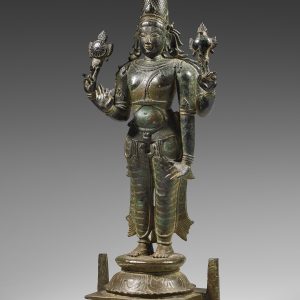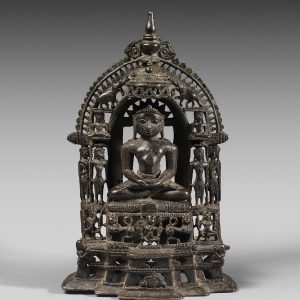Standing Buddha
Bronze
Thailand
Circa 18th century, Ayutthayā kingdom (1350-1767)
H. 35 cm or 13 ¾ in
Description
We like its beautiful brown-sand color patina which emphasizes the belt of the monastic garment as well as his physiognomy. But we also love the transcendental serenity emanating from his beautifully preserved face, contrasting with the unstructured and charismatic aspect of his body. Measuring 35 cm high (or 13 ¾ in) and made of bronze, it is dating from the Ayutthayā kingdom (1350-1767) and more precisely from the 18th century.
Śākyamuni Buddha, the historical Buddha, is represented here standing, wearing the monastic robe that unfolds in the back like a loose cape and is held at the waist by a wide textile belt that falls between the legs. According to classical iconography, he must have sketched the “no fear” gesture (abhaya-mudrā), while his left arm is stretched out to the side. Two signs of Buddhahood clearly appear: the flame, symbol of the Buddha’s spiritual strength, elegantly surmounts the uṣṇīṣa or cranial protuberance – seat of his wisdom – that is entirely covered with small curls of hair.
This piece falls within the development of a rich, stylistically diverse art, mixing with infinite variety the aesthetics of the various preceding Thai schools. Thus the general features of the face are reminiscent of the canon of Sukhothai art, while softening it: heavy eyelids, clearly arched eyebrows extending on the bridge of the slightly hooked nose, a delicate and sensual mouth, narrow and very elongated earlobes at last. The broad shoulders are a recurrent feature in classical Thai art, while the beautifully shaped torso and the clear attention given to the anatomy of the belly have nothing to envy the powerful bodies of earlier times.
Provenance: Private collection, France.

